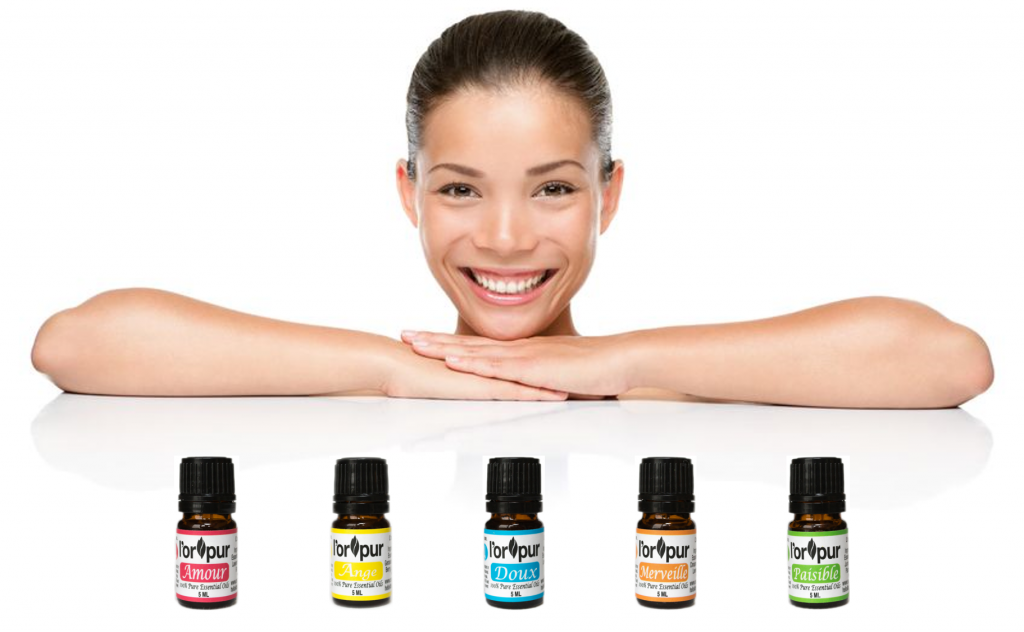So a while back I came across a funny video online. It was one of those videos that YouTube recommends (I don’t know how the tube knows what stuff I’d be interested in. But most of the time, it’s spot on. Techies understand this phenomenon better than I do).
The video was about a teenage boy with Tourette’s syndrome having a conversation with a police officer. He was yelling some obscene words and seemed not to be in control.
At some point, he screamed ‘I am a prostitute’ to the police officer. It was shocking though hilarious (the hilarious bit was totally the fault of the guy filming – he had a droll, comical laugh the whole time).
Anyway, sometime later, the video came to mind and I wondered why the young man behaved the way he did. You see, most people (those not under the influence of any drug) tend have an innate respect for the law. I mean, c’mon, there are things that just can’t be said in the presence of a law enforcer, let alone straight to them. But this young man; woooh, boy seemed to be on a roll.
As always, I did some light research on Tourette’s syndrome and as it turns out, that the teenager couldn’t help it.
His obscene outbursts happen literally everywhere he goes. You can imagine how embarrassing it is knowing you’ve got a loaded gun that could go off anyplace, anytime. And being a teen, I can only imagine how misunderstood he is.
Sure, most of us would think that people with Tourette’s get away with cursing and shouting obscenities all the time. But trust me, it is no fun. It’s obvious that the person’s social life is significantly affected.
In this piece, I will explain the underlying condition behind Tourette’s syndrome (tic disorder), and how one can manage it. Hopefully understanding it will allow you to provide more comprehensive care to your loved ones as well as know which trigger to avoid.
What Is A Tic?
A tic is described as an unvoluntary movement or sound that is activated by the brain. Given their unvoluntary nature, individuals do not have control over these movements and sounds at all.
There are two types of tics – vocal tics and motor tics.
Usually, these short-lived movements (uttered sounds or motor tics) occur suddenly during what we term as ‘normal behavior’. The tics are usually repetitive and have a successive occurrence of the same unvoluntary action.
For instance, an individual with a tic may blink his/her eyes several times or even twitch his/her nose over and over. In the case of the teenage boy I brought to your attention above, the action repeated was the utterance of ‘dirty words’.
Motor tics can be broken down further to include complex and simple motor spasms. The simple motor tics include eye blinking, head jerking, nose twitching and shoulder shrugging.
Complex motor tics, on the other hand, consist of several sudden movements performed in a similar order repeatedly. For instance, an individual may kick out with one leg and then follow through with the other leg or reach out and touch something over and over.
As I started describing what a tic is, you might have noticed I used the word ‘unvoluntary’. This was intentional. Tics are more of unvoluntary movements than involuntary movements.
Unvoluntary, in this case, means that an individual can suppress the urge to perform the repeated action for a while. However, the suppression only results in a buildup of the urge and discomfort. The buildup continues until it is relieved by performing the action.
At this point, it is important to note that tics affect people of all ages. However, they are prevalent in kids. Experts maintain that 25% of kids experience tics. Additionally, boys are more prone to develop tics than girls.
Now, let me complicate things for a moment…
Are tics the same as twitches? Well, not quite (even though some people use these terms interchangeably).
Here is the difference – muscle twitches are isolated rather than repeated actions. The muscle twitches are also known as myoclonic jerks. Unlike tics, twitches are completely involuntary. As such, they cannot be suppressed or controlled.
One of the most common types of muscle twitches is benign essential blepharospasm. This is the twitch type that causes your eyelids to ‘flatter’ uncontrollably. Usually, this twitching occurs repeatedly for a limited time. In some extreme cases (very rare), the condition can also affect the neck, mouth, and eyebrows.
While the eyelid twitch is similar to an eye blinking tic, it varies in the sense that it is uncontrollable. This kind of twitching, for the most part, affects adults. A family doctor can differentiate between an eyelid tic and an eyelid twitch.
Health experts believe that eyelid twitching develops as a result of a misfiring of certain cells in the brain. Blepharospasm is made worse by dry eyes, caffeine, sleep deprivation and harsh lighting conditions. We shall look at the symptoms and risks of tics later on in the article.
Common Tic Disorders
Okay, I’ve got some good and bad news.
First the good news – most tic disorders are not severe. As such, they only have a minimal effect on an individual’s quality of life.
And now, the bad news – in some cases, the tic disorders tend to be extremely troubling and disruptive. In such situations, they can affect one’s social, work and school life. In this case, leading a normal, carefree life is no longer an option.
Health experts use 4 elements to diagnose and classify tic disorders. These elements (characteristics) include:
- The duration of the tic
- The severity of the tic
- The age when the tic first manifested
- Whether the tic disorder is vocal, motor or both
a) Transient Tic Disorder
This particular disorder usually manifests in the younger generation (teens under the age of 18 years). It affects somewhere between 5-20% of school-going kids. Transient tics are characterized by one or more tics for a month but not more than 12 months.
The majority of tics experienced in this situation are motor tics though once in a while, vocal tics can manifest. Most children who have transient tic disorder experience multiple episodes of the tics which vary in the way in which they manifest.
b) Chronic Vocal or Motor Tic Disorder
Transient tics appear in a year. However, chronic tics can last for more than a year. The chronic vocal/motor disorder is characterized by one or more extended tics. The tics may either be vocal or motor but never both.
To be diagnosed with the chronic tic disorder, the symptoms have to appear before a kid hits the age of 18.
c) Tourette’s syndrome
At times, what may appear to be a chronic tic may actually be a symptom of Tourette’s syndrome. This is the most severe type of tic disorder and is often characterized by both vocal and motor tics.
Given that not many people in the world have been diagnosed with this disorder (though it is starting to be more known), there isn’t an exact figure of how many people live with this syndrome. However, a CDC study estimates that 135,000 kids between the ages of 6-17 who live with the syndrome in the US alone.
The strange thing about Tourette’s syndrome is that its severity changes with time. At times, one will experience periods of lowered tic frequency which will be followed by periods of vigorous tic activity. Fortunately, individuals living with Tourette’s realize that their condition improves as they grow older – and gain more control.
Symptoms of Tic Disorders
The number one symptom of tic disorders is the presence of one or several tics. Earlier on, we classified tics as motor and vocal tics. We also further divided the two into simple and complex tics. But aside from tics, there are other symptoms that accompany the disorders. These symptoms include:
- Worsening of emotions like fatigue, anger, excitement, and anxiety
- Worsening during illnesses
- Worsening during extreme temperatures
- Occur while one is sleeping
- Vary with time
- Vary in severity and type
- Improve with time
Causes and Risk Factors of Tic Disorders
Health experts do not have the exact cause of tic disorders figured out yet. However, studies reveal several culprits including gene mutations. Brain chemistry appears to be very important in all this (especially brain chemicals including dopamine, serotonin, and glutamate).
For the tic disorders that do have a direct cause, they can be fitted into a category after diagnosis. Such tics include stroke, infections, head injuries, poisons and numerous other injuries.
Additionally, tics are also associated with other medical disorders including Creutzfeldt Jakob disease and Huntington’s disease (again with the human-named diseases)
Some of the risk factors include:
- Genetics – tics tend to run in families. As such, there is a possibility of the presence of a genetic basis
- Sex – men are more likely to develop tic disorders compared to women
Complications
The complications associated with these disorders especially in kids include:
- ADHD
- Anxiety and Depression
- Autism Spectrum Disorder
- OCD
- Sleeping difficulties
- Language and speech difficulties
Other complications related to tic disorders are usually a result of the effects of the disorder on one’s self-image and self-esteem. Some research conducted has concluded that kids with TS or chronic tic disorder, experience a lower quality of life and have lower self-esteem in comparison to those living without the said disorders.
Additionally, and there is no doubt about this, individuals with Tourette’s syndrome often have problems with social life courtesy of their tics and other complications that arise as a result of the tics including ADHD and anxiety. You could be making out with your girlfriend one minute, and calling her names the next followed by a couple kicks.
Treating TICS
The treatment of tic disorders depends on the type and the severity of the disorder. However, it’s important to note that most tic disorders will resolve on their own. But for the severe tics, the kinds that interfere with daily life, they can be treated with medications, therapies and even deep brain stimulation.
Therapies for Tic disorders
Some therapies have been devised to help individuals control the tics and reduce their occurrence. These therapies include:
- Habit reversal therapy: this is a treatment that is designed to teach people living with tic disorders to use movements to compete with the tics in such a way that the tics do not occur
- Exposure and response prevention: this is a type of cognitive behavioral therapy which helps individuals are accustomed to their uncomfortable urges that precede the tic with the sole purpose of preventing a tic
Medication
Certain medications can be used alongside the above-mentioned therapies or on their own. Most medications are made to reduce the frequency of tics. However, they do not completely rid individuals of the tic symptoms. Some of the medications available include:
- Botox injections
- Anti-seizure medications
- Muscle relaxants
- Medications that affect dopamine levels
Other medications that help with tic symptoms include antidepressants which help with OCD and anxiety.
Deep Brain Stimulation
This is an option for individuals living with Tourette’s syndrome and whose tics have proven unresponsive to other forms of treatment or negatively affect one’s quality of life.
Deep brain stimulation involves implanting a battery operated device in the brain. The device produces waves of electrical impulses which span certain parts of the brain that control movement and consequently reduces the frequency of tics.
Essential Oils For Tics
Though we tend to simplify the composition and action of essential oils (I plead guilty for the said crime), it is important to have it in the back of your mind that essential oils are incredibly complex.
It is the reason they are considered potent and are used to treat and manage a myriad of diseases and conditions. Very few compounds can boast of the medical curative feats that essential oils achieve ever so effortlessly.
Let’s take a look into the complexity of essential oils and just how they can help in managing tics.
Warning: Things might get a little technical (but you are Oliviarites! Nothing can get you down – not even a paragraph or two of technical medical jargon).
Essential oils have fragrances, some of which are sweet and others, well, not quite so sweet-smelling. Experts say that the fragrances exert powerful stimuli on the limbic system.
The limbic portion of the brain includes; the hypophysis, the hippocampus, and the amygdala. These parts of the brain interact directly with the hypothalamus and the thalamus glands. Together, these brain parts and glands form the seat of sexual arousal, emotions, memory and govern aggressive behavior.
Now, essential oils contain thousands of chemical compounds which work together to provide therapeutic effects to a certain extent. These chemical constituents achieve their therapeutic effects by stimulating neurotransmitters, activating the secretion of specific hormones including endorphins and improving alertness, mental capacity as well as concentration.
With that said, there is no doubt that essential oils can help manage vocal and motor tics. You just need to know which essential oils to use and how to blend them to achieve maximum results.
For today’s segment, literally any of your favorite essential oils can be used out of the hundreds readily available. Just the aromatherapeutic properties of most essential oils is enough to bring down the severity and frequency of tics.
So, shall we hop over to the recipe mixing table?
Recommended Product For Tic Disorder
The oils in blend below are known to help with ADHD, emotions, disruptive and impulsive behaviors, and will also relieve tension, promote sleep, restore feelings of hope and bring peace to your child. It is all-natural and can’t hurt, so by all means I recommend giving it a try!
You can also read more here.
Essential Oil Blends For Vocal And Motor Tics
Recipe 1: Tourette’s Syndrome Management Blend
Ingredients
Essential oils of:
- Cedarwood
- Vetiver
- Frankincense
- Lavender
- Lemon
- Carrier oil (either coconut oil or sweet almond oil)
Directions
As a parent, it can be heartbreaking to have your doctor diagnose your child with Tourette’s syndrome. Lots of questions will go through your mind as to what you could have done differently to keep him/her from developing the disorder.
However, while it can literally shake the ground beneath you, I’m here to give you some hope with this essential oil blend. If this is your first time and you are skeptical about it, you probably will find comfort in the fact that other parents in a situation such as yours have used it and in several weeks, the tics reduced.
Every essential oil in the blend plays an active role in giving your child his/her ‘life’ back. Cedarwood will soothe your child, frankincense will relieve stress and help your child focus better, vetiver will psychologically ground your child and lemon will ‘tame’ the nervous system. Add the carrier oil into a 30ml roller bottle and then add 8-10 drops of each of the above essential oils. Shake the blend to mix evenly before using it.
To use the blend roll two drops on your chest (on the left side), or on the soles of your feet. Apply the blend once on a daily basis. Ideally, nights are best but you can choose which timings work better for you. If you don’t see results in a few weeks that follow, ramp up the applications to about 2 or 3 times daily.
Recipe 2: Masters Blend for Tics
Ingredients
- Vetiver – 10 drops
- Ylang Ylang – 8 drops
- Clary Sage – 9 drops
- Lavender – 6 drops
- Sweet Marjoram – 7 drops
- Frankincense – 5 drops
- Carrier oil (60ml)
Directions
Now I have to be honest, there are several essential oil blend brands that are expensive. These blends have the benefit of having numerous positive reviews. But courtesy of their high cost most people do not give essential oils a chance.
Fortunately for you, I have honed the skill of making potent essential oil recipes. The above recipe mimics multiple costly essential blends known to be great for individuals with Tourette’s syndrome.
Note that this blend is too potent to be used on kids. If you intend to use it on a child, use fewer drops or dilute it even more with your preferred carrier oil. To make the blend, simply mix all the ingredients in a small glass bottle / roller. Apply as per Recipe 1 above.
Recipe 3: Easy Lavender Neck Rub
What you need
- Lavender – 3 drops
- Fractionated coconut oil/almond oil – 1 teaspoon
Directions
In an earlier section, I’ve pointed out anxiety as one of the complications of tics. It is easy to understand why the involuntary tics could cause children, teens, or even adults anxious and keep them on edge. The society doesn’t make it easy for them either. Dealing with the anxiety will help an individual with either a voice or motor tic cope well in an unforgiving world.
Mix the two ingredients together in a small glass jar. Once it is ready, pour a few drops into your palm and rub it onto your neck or that of your child. You can also rub it on the soles of your feet. The best time to apply is before bed.
Recipe 4: Depression Blend for Tourette’s
Ingredients
Essential oils of:
- Rose – 1 drop
- Sandalwood – 3 drops
- Orange – 2 drops
Directions
The thing about depression is that it can affect anyone. And unfortunately, it’s more common in our society that we would like to accept. Anyone suffering from tic disorder are often at the mercy of depression (as if life is not hard enough with a tic disorder alone). Luckily depression can be managed with several essential oil blends including this one.
You can use the blend in three ways: a diffuser, and inhaler or as a bath oil. I personally prefer the diffuser simply because I find the method less complicated.
For a diffuser blend, multiply the ingredient amounts by 4 to have a 20-drop recipe. Add the ingredients to a glass bottle (preferably dark colored) and mix thoroughly. Add several drops of the blend according to the directions on your diffuser.
Note: some thick oils including citrus oils are not compatible with some diffusers. For this reason, you have to read the diffuser instructions first.
Recipe 5: De-Stress Easy Blend for Tic Disorders
What you need
- Cedarwood – 7 drops
- Ylang Ylang – 5 drops
- Lavender – 4 drops
- Patchouli – 3 drops
- Bergamot – 6 drops
- Carrier oil
Directions
This is a perfect stress reliever. It can be used regularly to calm the nerves without affecting energy levels. It is perfect when one cannot seem to calm down. With all ingredients at hand, mixing up this recipe will not take long – 3 minutes maximum. The mix can be used as a massage rub to de-stress.
Recipe 6: Calm Your Little One Blend
Ingredients
- Sweet almond oil – 2 teaspoons
- Vetiver – 4 drops
- Patchouli – 3 drops
- Peppermint – 2 drops
- Lavender – 5 drops
Directions
This power blend is technically designed to help manage ADHD in kids but given that ADHD is a complication that often accompanies tic disorder, it is the perfect blend to use.
Add the ingredients in a glass bottle, screw back its lid and mix the ingredients. You can choose to use it in a bath or apply it on the bottom of your feet through a relaxing floor massage or apply it to your wrist and temples.
The Bottom Line
Though there are numerous videos on individuals living with tic disorder labelled ‘funny’, we both know there is nothing remotely funny about it.
It is a condition that makes life difficult. As such, it is up to you and I to create awareness of the disorder and help deal with it.
Let us help foster the inclusion of people with tic disorder in day to day lives without making them feel weird or left out. As we champion this cause, the essential oils and blends I have compiled for you above will help make life easier. We can do this guys!












